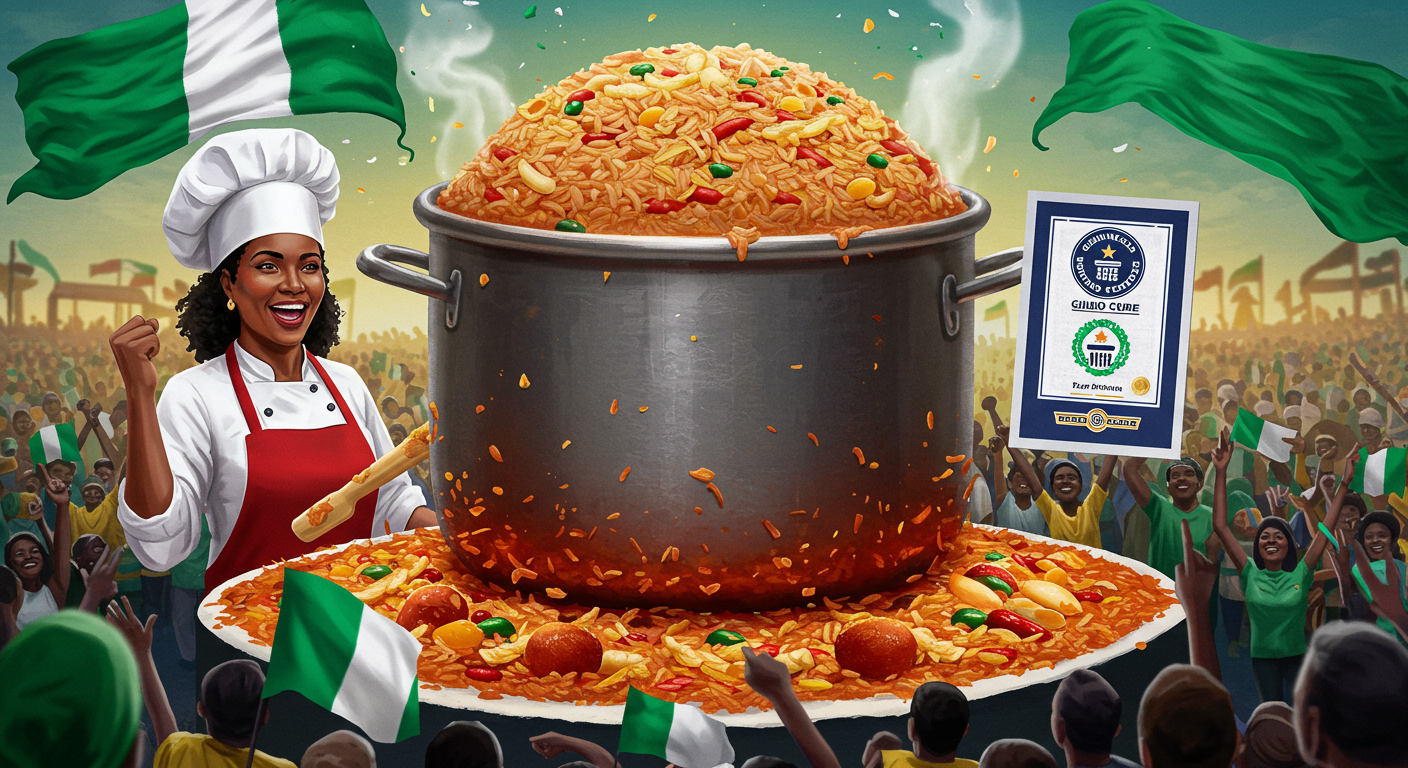When Nigerians hear the word jollof, they don’t just think of food. They think of pride, rivalry, and culture. That is what made the Guinness World Record feat of the world’s largest pot of jollof rice cooked by Chef Hilda Baci in partnership with Gino more than a culinary stunt. It was a marketing play that fused cultural capital with experiential branding. But beneath the cheers lies a deeper lesson about why this worked, and why most brand campaigns do not.
Gino: From kitchen brand to cultural icon
For years, Gino has competed in Nigeria’s fiercely contested FMCG sector. Tomato paste and seasoning brands fight on price, packaging, and distribution, often fading into a sea of sameness. Instead of running another television commercial, Gino planted its flag in Nigeria’s cultural battlefield: the jollof pot.
By tying itself to Nigeria’s most emotionally charged dish, the brand didn’t just sell food; it sold belonging. The Guinness World Record stamp elevated this move from a national activation to a global talking point, turning a pantry staple into a cultural anchor. Unlike most FMCG campaigns that live and die within a quarter, Gino created an event that now sits in collective memory.
Hilda Baci: More than a chefs
Hilda Baci’s personal brand is as important as the pot itself. Her cook-a-thon had already positioned her as a symbol of endurance and ambition. But the partnership with Gino gave her scale and permanence.
Her appeal wasn’t manufactured through slogans; it was earned through grit, visibility, and authenticity. That alignment matters. If Gino had chosen a generic influencer, the stunt would have looked transactional. With Hilda, the message travelled further because it felt lived, not scripted.
Lessons for brands: Beyond the Guinness pot
This was more than food; it was a strategic playbook. The key lessons are clear. Brands must take pride in culture, just as jollof represents Nigerian identity. Savvy companies do not merely exist at the margins of society; they immerse themselves within it.
Food fosters loyalty through community. Thousands of participants, both in person and online, formed lasting emotional bonds with Hilda and Gino. Content remains the currency of modern marketing, and a single event like this can fuel campaigns for months through viral clips, behind-the-scenes footage, and personal stories.
The synergy between personal brands like Hilda’s and corporate brands like Gino’s illustrates the exponential impact of authentic partnerships. Together, they created influence that neither could have achieved alone.
Why this worked where others fail
The success of the event was not a matter of luck but the result of three interlocking strategies. First, Gino chose cultural immersion, embedding itself in a cultural ritual rather than borrowing from it superficially. Second, the activation achieved experiential scale, drawing thousands of people in person while engaging millions more online, effectively blurring the line between community gathering and digital virality. Finally, the Guinness World Record stamp provided symbolic capital, transforming what could have been a local celebration into a global headline and reframing Gino as more than a regional brand.
Contrast this with Pepsi’s infamous Kendall Jenner protest ad. That campaign heard the cultural noise but misread the meaning. Gino and Hilda got it right because they listened first and acted within an authentic cultural frame.
The risks marketers forget
It’s tempting to view this as a template, but the truth is that risk sat at the centre of this stunt. What if the pot failed Guinness inspection? What if the food quality disappointed? What if logistics collapsed? These questions remind us that cultural marketing is not safe. It is fragile, unpredictable, and public. Yet that risk is often the price of true brand impact.
The bigger picture: from products to participation
The lesson here is not about jollof. It’s about how modern brands win when they stop selling products and start participating in sales. Consumers don’t just want to buy from brands; they want to belong to them.
By feeding thousands and engaging millions, Gino and Hilda created loyalty not through discounts or jingles, but through cultural immersion. They turned a meal into a memory, and a brand into a symbol.
That’s the real masterclass.
REGISTER FOR MARKETING EDGE STAKEHOLDERS SUMMIT









Comment
No comments found.